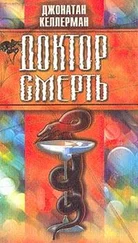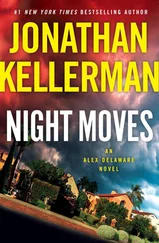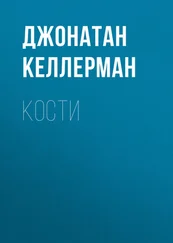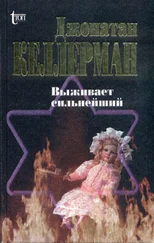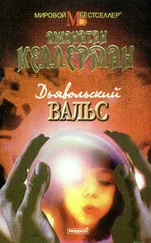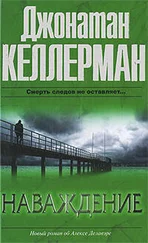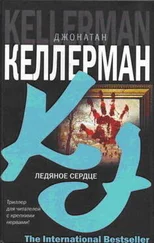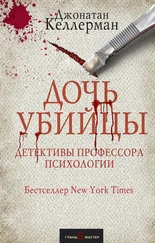“Ha. Okay, soon as I get back, I’ll start digging.”
“Where are you?”
“One guess.”
“A convention.”
“What tipped you off?” she said. “The despair in my voice?”
“Where’s the idea-fest?”
“New Haven, talk about rarefied hot air.”
“Groupthink.”
“Oh, yeah,” she said. “And the group’s an idiot.”
—
I ran my own search for Anton Des Barres. Got immediate gratification in the latest quarterly report of a corporation called ADB-Tec and Research.
The company’s “mission” was “ultra-precision manufacture of high-grade scalpels, clamps, cannulas, stylets, trocars, endoscopes, elastomeric balloons, catheters, and arthroscopes.”
Now a subsidiary of a Taiwan-based conglomerate called Healing Hands, Ltd., ADB operated satellite facilities in Singapore, Stockholm, and, most recently, Dubrovnik, Croatia.
Des Barres’s name came up in a two-paragraph Company History exposition.
ADB, founded in 1962 by Dr. Anton Venable Des Barres,a California Institute of Technology–trained mechanical engineer, achieved rapid renown by dependably supplying the U.S. military with the highest-quality surgical instruments available anywhere in the world. So admired were ADB’s field kits during the Vietnam War that the company was entrusted with writing “Mil-Specs”—military specifications—for a variety of surgical implements, an honor that persisted for decades.
Dr. Des Barres’s motto, Puritas, Salus, Virtus —Latin for “Purity, Safety, and Efficacy”—has remained the company’s operating principle. Originally situated in Los Angeles, the company moved to Franklin Park, Illinois, where manufacturing operations have since ceased but administrative offices remain: Accounting, Marketing, Sales Supervision, and Human Resources. Specific purchase orders are handled by each manufacturing facility, however inquiries regarding corporate liaisons and promotions should be directed to Franklin Park…
Between the paragraphs was a color headshot of a man with a long, seamed face thatched by a head of full white hair. Black suit, white shirt, black tie, a taut smoothness to the face that said professional retouching. Anton Des Barres’s eyes were pale and sharply focused, his nose an off-kilter beak that shadowed a dark pencil mustache.
Below the photo were the bracketed dates of the founder’s birth and death. Des Barres had passed away nineteen years ago at the age of sixty-two.
The scenario I’d suggested didn’t seem unlikely: a dying man reaching out for answers.
If that was true, a living relative might have something to say. I ran a search using Des Barres’s surname alone and came up with three likelies.
Anthony Des Barres, M.D., practiced vascular surgery in Winnetka, Illinois. William Des Barres, Esq., practiced estate and trusts law in Highland Park, Illinois. Both towns were affluent suburbs of Chicago a brief drive from ADB Corporate Headquarters in Franklin Park.
Promo photos showed two beefy men in their mid- to late fifties. A strong resemblance and logic made brotherhood a cinch. So did an overall similarity to Anton Des Barres’s facial structure when you accounted for the extra flesh common on adults of the postwar, ample-food era.
Excellent candidates for contact, but Valerie Des Barres of Los Angeles, California, no neighborhood or photo provided, was a more geographically convenient target.
Her name brought up the IMDb database, where she was listed as executive producer of three animated TV movies shown on a family-friendly channel.
Muffy Comes Home.
Muffy Finds a Friend.
Lionel Roars but No One Hears.
The next reference linked me to an author’s website.
—
Valerie Des Barres was a narrow-shouldered, dark-haired woman with a pinched but pretty face and a hesitant smile. Younger than Anthony and William—midforties.
She described herself as “an artist and activist passionate about children’s growth and development” whose interests had led her to write eleven books for preschoolers in as many years. All had been released by Muffy Press. I found no other authors on the company’s list, suggesting self-publication.
Six Muffy books starred a streetwise squirrel, three featured Lionel Van Noise, a cheeky, high-volume raven, and the most recent two, released three years ago, described the adventures of Lady Hildegard, a once-pampered Maltese separated from her family by a yacht wreck and forced to make her way through an urban jungle closely resembling Lower Manhattan.
For each column, Valerie Des Barres was listed as both author and illustrator. Samples of her artwork revealed vibrant, eye-catching watercolors. Serious talent, well beyond a vanity project.
The bottom of the Books page posted sales links and the assurance that proceeds were “donated wholly to charity.” The final line was a small-print list of “suggested nonprofits recommended by Muffy, Lionel and Lady H. But the choice is yours.”
I returned to IMDB and found the name of the production company that had put the trio of films together. Muff-Li Ltd. Likely another self-fund.
The books had garnered a scatter of online reviews, most praising the gentleness of the story lines. One anonymous rater panned Lionel Puffs Up His Treasure Chest for the bird’s “classical male abrasiveness.”
Pushing away from the computer, I poured coffee in the kitchen and carried it back to my office, wondering if Valerie Des Barres’s interest in child welfare had ever led her to one of L.A.’s most deserving nonprofits: the children’s hospital where I’d trained then worked for a decade.
I spent the next hour talking to doctors, nurses, child activity specialists, and social workers at Western Pediatric Medical Center, made a last stab at the Development Office. No one had heard of Valerie Des Barres.
Not a total surprise; there are rich neighborhoods throughout L.A. but the concentration of wealth is highest on the Westside and the hospital’s scruffy East Hollywood location sometimes puts Westsiders off.
Years ago, while I was working in Hematology-Oncology, my boss had ordered me to train a group of “highly motivated” Junior Leaguers from Pasadena to serve as volunteers. I’d spent a month with what seemed to be an enthusiastic bunch of young matrons only to have the project fall apart because the women decided the half-hour drive was “too intense.”
I shifted west and tried contacts at the U. med center in Westwood. Same result.
Logging back onto Valerie Des Barres’s website, I scrolled down to the organizations “recommended” by her characters.
Aprendemos, a group in Modesto that provided after-school tutoring to the children of migrant workers.
The supplies funds of five PTAs in South Central and East L.A.
The Comfort Zone, a San Francisco group providing “toys, recreational opportunities, and emotional support to bereaved youngsters.”
That made me wonder. Ellie Barker had talked to a woman, a San Francisco fundraiser for children whose parents had died, before Andrea Bauer had taken over. I didn’t have Ellie’s number but I did have Bauer’s.
Her voicemail said, “Traveling somewhere.” Her Facebook page said Asia.
I looked up time differences between L.A. and the Far East. China, Hong Kong, and Singapore were fifteen hours later, Japan, sixteen.
Four p.m. here meant seven to eight a.m. in what used to be called the Orient. If Bauer wasn’t an early riser, she could learn to be flexible.
—
She answered her cell sounding cloudy. “Who?”
“Alex Delaware. We met on the—”
“Oh. The psychologist.” Yawn. “Why would you be calling me at this hour?”
Читать дальше

